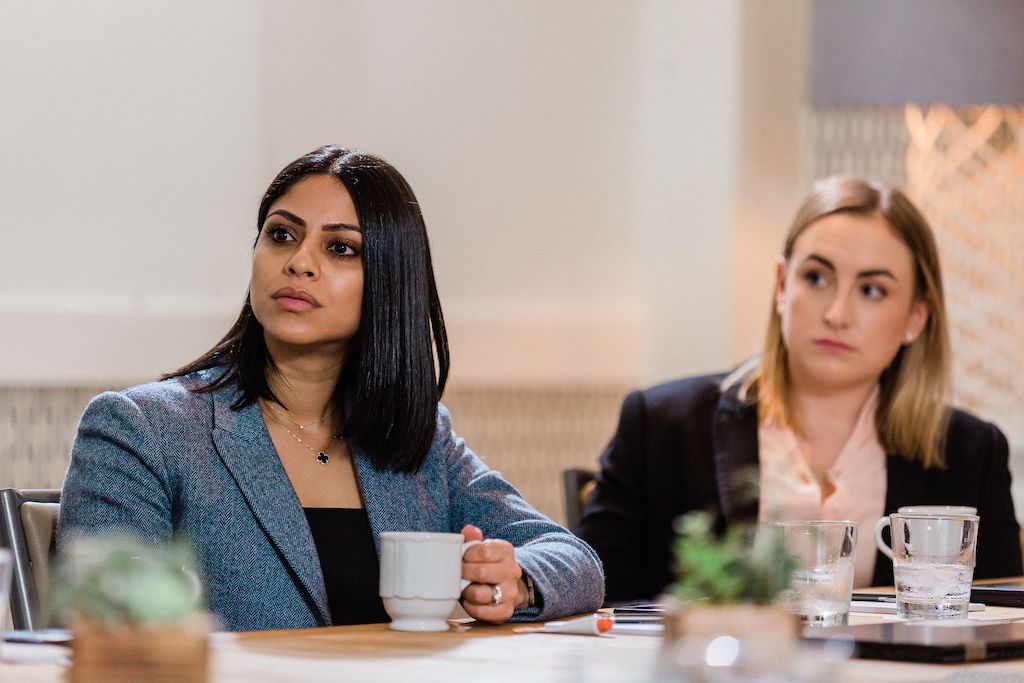

Dan Hlavaty
Geoffrey's Kids: An Interview with A Toys "R" Us Vet
Kyle Sturgeon and Sarah Abdel-Razek of MERU recently sat down with Dan Hlavaty, a former Toys “R” Us senior executive to discuss Toys “R” Us’ recent bankruptcy filing, the retail market for toys, and the increasing competition in the space. The following is excerpted from a longer conversation.
MERU: To start, give us an overview of your background and experience at Toys “R” Us.
Dan: I started with Toys “R” Us right out of college and was at the company for over 30 years. I started in a trainee position at a store and my career progressed through the field to General Manager of our Canadian company. I returned to the U.S. as a Regional Vice President where I had responsibility for a group of stores. Eventually, I had the title of Vice President of Store Operations for about 5 – 6 years before moving into supply chain work. I subsequently became the Senior Vice President of Merchandise Planning and Allocation for the U.S. with responsibility for our merchandise purchases and managing critical metrics such as in-stocks.
MERU: So Toys has been in the news a lot as a result of their chapter 11 bankruptcy filing. What do you think are some of the main reasons why they are in the situation they are in today?
Dan: The main reason is the amount of debt they have been carrying [from the LBO]. All other reasons are related to that. For example, they have not been able to invest in the stores, technology, or online experience due to the high costs associated with servicing their debt. Also, there is a perception that they are behind what their competitors are offering on their online platforms which is another reason they’re in that position. It all goes back to the debt hurting their ability to invest in those key operational areas.
MERU: In terms of the timing of the filing, were you surprised by its proximity to Q4 and the holiday season?
Dan: While I don’t think there is ever a good time to seek Chapter 11 protection, filing as you head into the fourth quarter in a toy business is problematic given the holiday season represents a significant portion of the annual revenues. From what I’ve read in the news, some of the vendors had started hearing about Chapter 11 becoming an option and changed their terms to cash-on-delivery. While I don’t think the timing was great, I’m not sure they had any other options.
MERU: Amazon is everywhere these days. How is competing with them different than some of the traditional big-box competition (Target and Wal-Mart)?
Dan: There was a time where Toys “R” Us was the number 1 seller of toys in the U.S. before they were passed by Wal-Mart a decade or so ago. There was a huge focus on competing with big-box retailers. One of the things that a category killer needs to look at is if your competition is bigger and broader in the selection, they will be able to attract more people to their store with their assortment. Therefore, a category killer’s advantage should be service, experience, and product knowledge.
2016 U.S. ONLINE TOY SALES ($M)

Source: Statista, eCommerceDB.com
Another way a category killer can differentiate themselves is through exclusive merchandise. During my time at Toys “R” Us, we worked very hard at getting exclusive items from vendors and there was a team of merchants that was in product development and focused on developing proprietary brands for Toys “R” Us. These also help your margins.
MERU: You mention merchandising – you had a senior role in the Toys merchandise planning organization. What are the most important metrics for a retail planner to focus on?
Dan: In-stock is obviously the most important metric to ensure that you have what the consumer wants in the right place at the right time. You must be efficiently managing your inventory and not over-investing in stock. A key part of that role was making decisions about what buyers should be made and what buy shouldn’t. We had an open-to-buy and were very disciplined about sticking to that.
We also monitored inventory turns very closely by the business within the company (e.g. video games vs. dolls). If I was there today, I would be monitoring this metric very closely and making tough decisions on which businesses to invest in. Targeting businesses that are on the upswing is key to hitting sales goals but sometimes you don’t know if you’re successful until a year later. Therefore, you have to be nimble and be able to move money back and forth between businesses when needed. This requires really good forecasting.
MERU: Why is good forecasting such a tough challenge for so many retailers?
Dan: You have several constraints you need to operate within. We had a finite amount of space in the stores, so space was one constraint. The other thing that you really need to be cognizant of is physical constraints. In most hardline business, products arrive in master cartons. Imagine an item turns into a slow seller: you’ve sent a carton of 24 to a store that’s selling one a week. You’ve already sent them a half year’s supply [1 unit per week times 24 units = 24 weeks supply] by sending one carton. Those kinds of constraints are a little more difficult to manage, take additional skills, and a lot of process analysis to determine where the carton should go and when.
There were some products where the right thing to do was to break up the carton and ship it in individual pieces but that adds a tremendous amount of cost to the product.
MERU: If you were made king of Toys “R” Us today, what are the main things you would change to improve their odds of success going forward?
Dan: I am a process guy at heart so the first thing would be having a very strong emphasis on process both in the supply chain and stores to ensure that steps taken to maximize efficiency aren’t causing problems somewhere else in the supply chain. For example, it’s easy to say that you’re going to get the best rate on ocean shipping, but the downside to that is that it takes four days longer to cross the Pacific and it impacts speed to market on new items.
The second area of focus would be on capital investments in stores. The floor and ceiling need to be clean, the customer experience and services need to be continuously improving, the stores need to be bright, and checkout should be quick and easy.
Lastly, I would focus on the online experience and platform to compete with the big players in this space. This would include constantly refreshing the website, ensuring the checkout process is easy, and empowering employees to make decisions that are in the best interest of the customer. For example, when a customer encounters shipping delays or issues, they should be given a discount or a refund to ensure you keep the customer in the future.
MERU: Did Toys use in-store fulfillment of online sales? What lessons did you learn from that?
Dan: While I was at Toys “R” Us, we began fulfilling online orders in stores. Deciding where you ship from is a very important decision. The second thing you need to consider once you’ve decided on where to ship from is more of an operational consideration. Packing items and boxing them to ship out of a store is not a core competency of a store or store employees. There is significant training required. There is a finite amount of labor in the store. You lose sales when you don’t have a cashier to put on a register because you have too many online orders to fulfill.
I would recommend to any retailer in this situation to start small and have a numeric limit on how many orders a day, for example, they’re willing to pull. As your staff becomes more competent and efficient at it, start increasing the number.
MERU: Do you think the rise of video and iPad games is replacing the experience of taking kids to a store and buying toys?
Dan: A kid is always going to be in awe when they walk into a 40,000 square foot building full of toys. There’s no doubt that the toy industry will continue to be alive for a very long time. There has, however, been a shift in the type of toys that kids these days find appealing. Toys need to be more interactive to compete with digital games and almost all toys today are at least partially interactive.
But there’s nothing that will replace the wonder in a child’s eyes when they see aisle after aisle of toys.
MERU: Thanks for your time.
Dan: Thank you.
--
Kyle Sturgeon is a Managing Partner at MERU. His decade of turnaround experience includes restaurants, retail entertainment chains, and over a year dedicated to the turnaround of a large dairy farm.
Sarah Abdel-Razek is a Director at MERU. Her restructuring and turnaround experience includes digital media, energy, and retail companies.
Dan Hlavaty is a former Toys “R” Us Senior Vice President of Merchandise Planning and Allocation for the U.S. with extensive experience in merchandise planning and inventory management operations










